Nexus Community Report: AMAs, dApps, and Creator-Driven Culture
As we welcome December, the Nexus ecosystem continues accelerating across protocol development, global community engagement, and creator-driven culture. This week

Finance is the beating heart of modern civilization. It allocates resources, measures risk, and fuels innovation. Yet the infrastructure that underpins our global financial system remains fragile, opaque, and, at times, profoundly unjust.
Behind the interfaces of digital banking and mobile trading apps lies a vast web of intermediaries and unverifiable logic. Your money is “there” because a database says so.
A trade “cleared” because a private institution approved it. A balance “settled” because multiple layers of trust — banks, custodians, regulators — say it is.
There are a lot of issues with the current system, but one of the biggest is the legacy system is unfit for the scale, speed, and global coordination that the future demands.
At Nexus, we’re building the foundation for verifiable finance: a system where the correctness of every operation, whether it’s a market trade, a debt issuance, or a payment, is guaranteed by mathematical proof, not institutional promise.
Last week we announced the Nexus Roadmap, which hits on verifiable finance. Let’s unpack what this means, why it matters, and how the core components of Nexus make it possible.
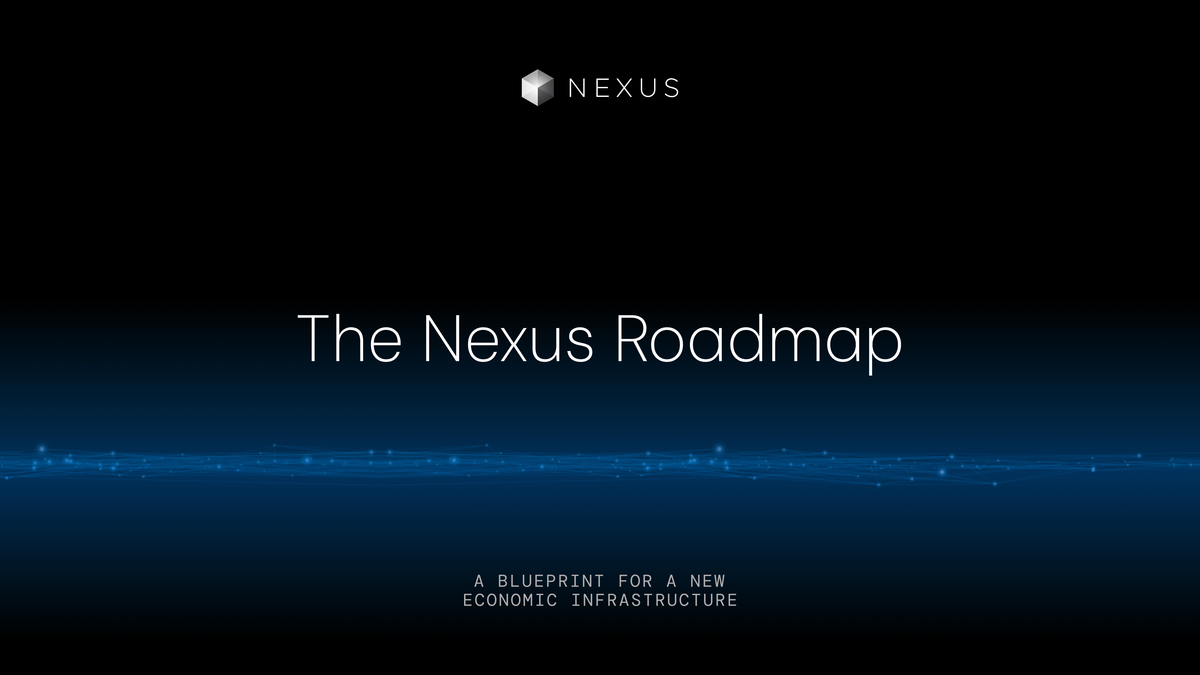
Traditional financial infrastructure is built on trusted intermediaries. Banks, clearinghouses, brokerages, and regulators form a labyrinth of interdependent actors who vouch for one another’s data and decisions.
This model has persisted for centuries, and for good reason: early societies had no alternative. But today, we face a paradox.
Financial systems have never been more computational — algorithms (and soon machines) move trillions in milliseconds — yet the underlying trust model still hinges on human institutions, legal contracts, and subjective guarantees.
As a result:
In a world increasingly defined by automation, AI, and programmable capital, this model is not just inefficient — it’s massively problematic.
We need to evolve from trusted finance to verifiable finance.
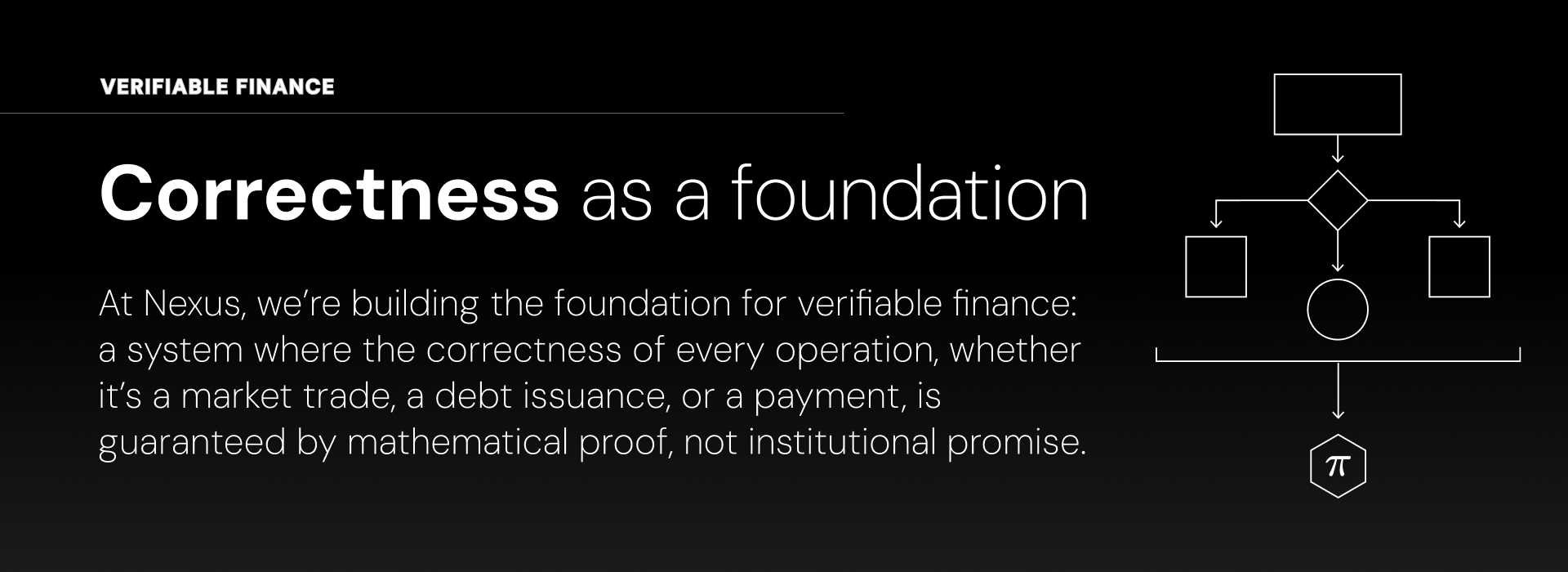
Verifiable finance is a new design paradigm for financial systems. Instead of relying on institutional guarantees, verifiable finance ensures that every operation in the system — every transaction, computation, and rule execution — can be independently verified by cryptographic proof.
At its core, this is about establishing computational integrity as a first-class primitive for finance.
In a verifiable financial system:
The implications are massive. Verifiability transforms finance from a world of opacity and gatekeeping into a global, open-source substrate where correctness is default and trust is programmable.
But to make this work at scale, we need new infrastructure that is purpose-built for cryptographic assurance.
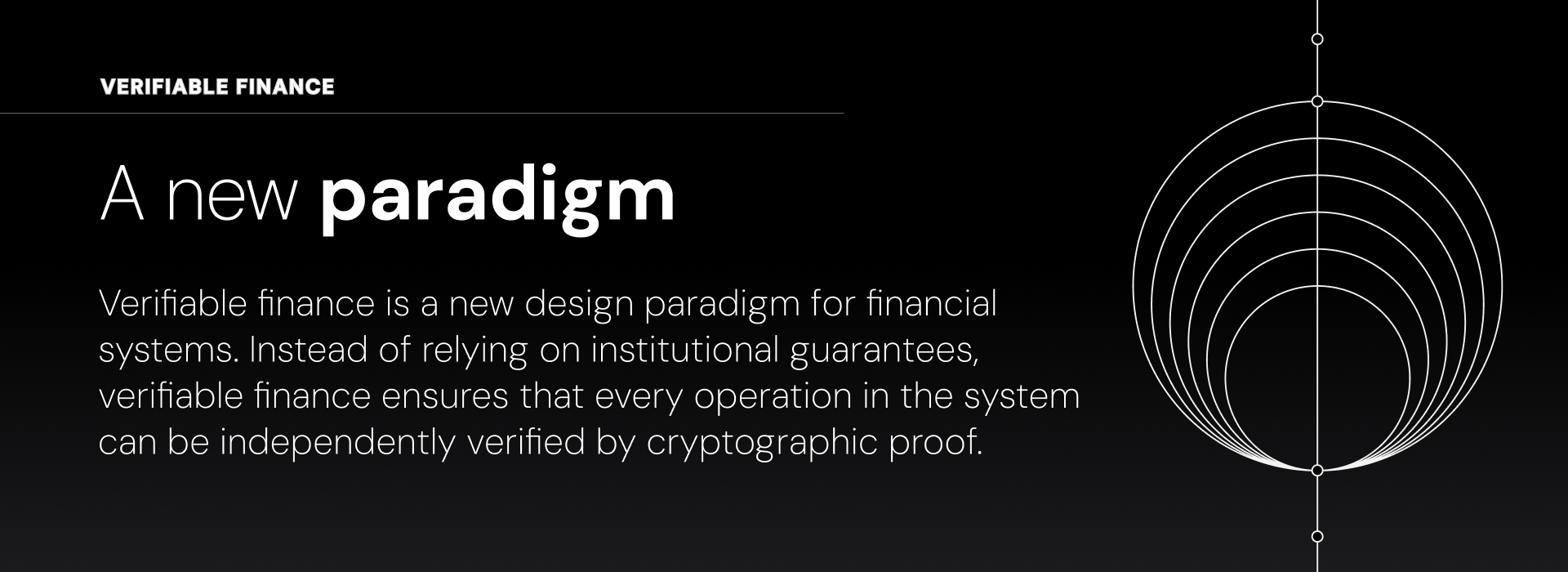
Verifiable finance doesn’t emerge from a single product. It requires a tightly integrated stack that can deliver high-throughput computation, verifiable execution, and universal settlement — all secured by proof.
That’s what we’re building at Nexus. The core components are:
At the heart of verifiable finance lies a fundamental requirement: prove that a program ran correctly, without rerunning it.
The Nexus zkVM (zero-knowledge virtual machine) enables this. It’s a high-performance, general-purpose virtual machine that turns arbitrary programs into cryptographic proofs of correct execution.
Think of it as a universal prover. Whether you’re pricing a derivative, rebalancing a portfolio, or running a compliance check, the zkVM can prove the result is correct—without exposing sensitive data or revealing proprietary code.
Our zkVM is designed for performance, composability, and integration. It supports rich programming models, optimizes for modern cryptography, and interfaces seamlessly with the broader Nexus stack.
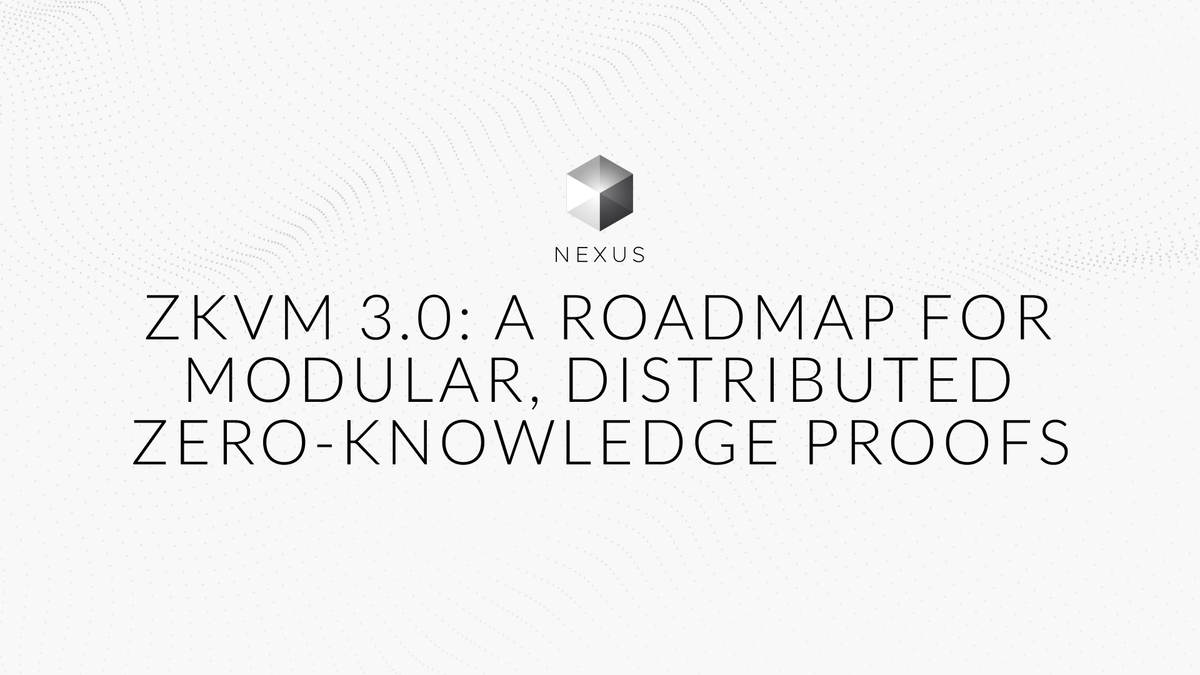
Verifiability doesn’t scale on its own — it needs infrastructure to power it.
The Nexus Compute Network is a global marketplace for proof generation. Developers submit programs and inputs; the network returns verifiable proofs.
This decouples compute from consensus. Instead of overloading the base layer with every computation, the heavy lifting happens off-chain — secured by proof and validated onchain.
It’s a paradigm shift: instead of running programs onchain, we verify them onchain.
This model enables unprecedented scale. High-frequency trading, credit scoring, insurance risk models — all can be executed privately off-chain and settled with onchain proof.
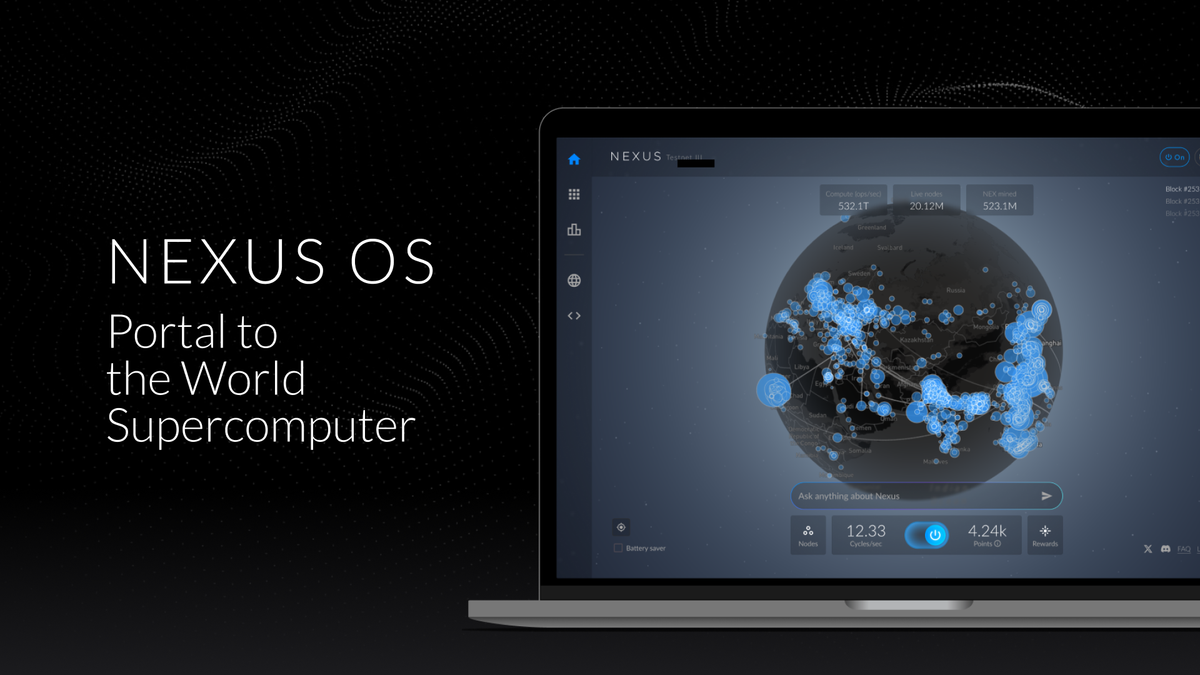
To make verifiable finance real, proofs need a home.
The Nexus Layer 1 is a settlement layer optimized for proof verification. It accepts and validates proofs from the compute network and zkVM, making verifiable computation a first-class citizen of the chain.
Importantly, this isn’t just another blockchain. It’s a verifiability-native ledger and is designed to record, validate, and enforce outcomes based on mathematical correctness.
This foundation unlocks powerful new primitives:
The result is a complete feedback loop: write a financial program → run it through the zkVM → prove it on the compute network → settle it onchain. Fully verifiable, end to end.
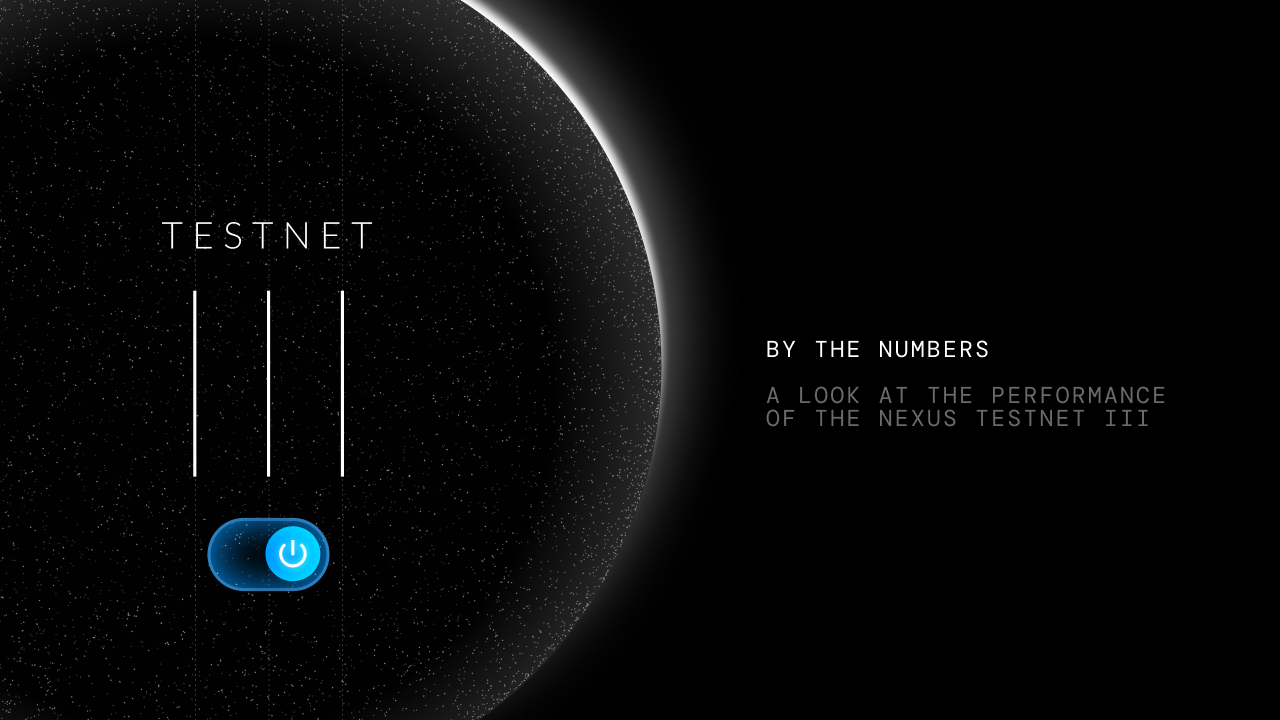
The timing for verifiable finance is not incidental.
The global financial system is straining under its own weight. Rising transaction volumes, increasingly automated strategies, and geopolitically fragmented institutions are exposing the limits of trust-based infrastructure.
Meanwhile, cryptographic primitives — especially zero-knowledge proofs — have matured from academic theory to production-grade tooling. We can now prove the correctness of complex computations orders of magnitude faster than ever before.
And perhaps most importantly: users are demanding more. More transparency. More access. More fairness. Verifiability delivers all three.
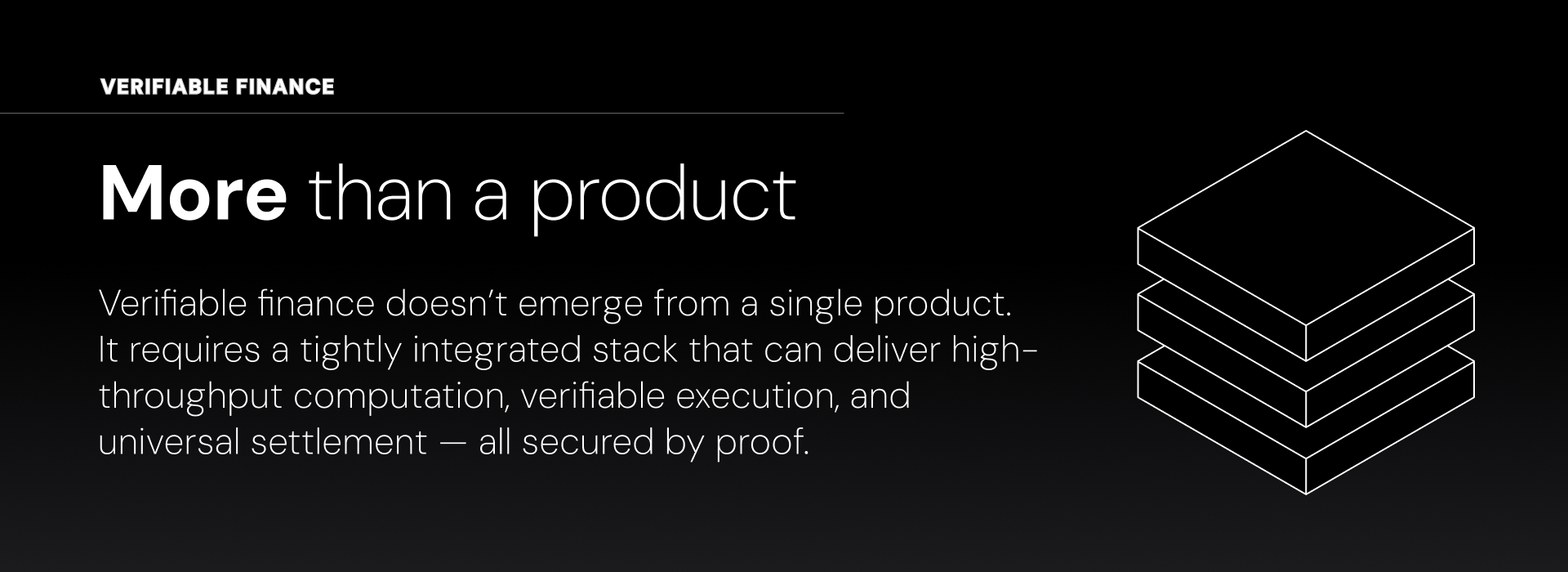
From possible to inevitable
The concept of verifiable finance isn’t just theoretical — it’s becoming inevitable.
We’re already seeing early examples emerge:
But these are still fragments. What’s needed is a coherent, high-performance infrastructure layer that makes verifiability the default.
That’s what Nexus is building.